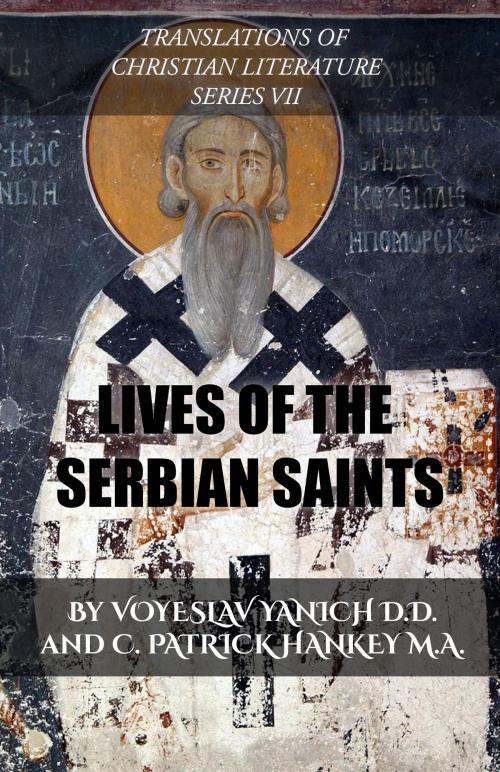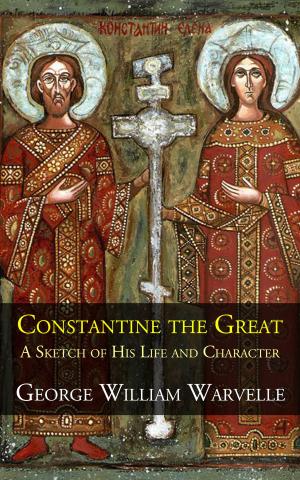Lives of the Serbian Saints
Nonfiction, Religion & Spirituality, Christianity, Christian Literature, Christian Life| Author: | Voyeslav Yanich | ISBN: | 1230001938579 |
| Publisher: | CrossReach Publications | Publication: | September 27, 2017 |
| Imprint: | Language: | English |
| Author: | Voyeslav Yanich |
| ISBN: | 1230001938579 |
| Publisher: | CrossReach Publications |
| Publication: | September 27, 2017 |
| Imprint: | |
| Language: | English |
This collection of lives is taken from what we should call the martyrology of the Church in Serbia. There were, at one time, a number of these martyrologies in use in Europe containing different lists of saints, together with their lives. In the West these tended to give place to a calendar and lives of a more or less official character; but in the East the monasteries in particular seem to have kept their own calendars and their own special traditions about their saints and special offices in their memory. This was the case in Serbia, where many monasteries preserved their own separate collection until the middle of the last century. In all these old office books certain great national saints would be sure of a place. No Serbian martyrology would be complete without a life of St. Sava, for instance. But the stories of their lives, affected by local tradition or by some contact of the saints with the monastery in his lifetime, would often show considerable variety. Other saints would be included only in the commemoration of churches of a particular district because their fame had never sufficiently penetrated beyond it. Two classes of difference thus arose in these various collections. There was the variety in the list of saints included; and there was sometimes considerable variety in the stories of their lives.
In the middle of the last century, however, there was issued one martyrology for the use of the Church throughout Serbia. A certain list of national saints thus obtained recognition, and the stories of their lives received a fixed form. It is a translation of the lives included in this book which is here presented.
The result of this treatment of the old office books may be compared with the outcome of the work of the various writers who edited the original documents of the Hexateuch. Sometimes a selection has been made from a choice of stories. Sometimes one detects that the paste and scissors have been at work. Sometimes part of a story seems to have been rewritten because edification is more important than a close adherence to tradition. And just as the student of the Hexateuch would like to be able to see the original documents, untouched by the hand of the redactor, so it is probable that the reader of these lives will wish at times that he could compare them with an earlier version, or could read the other stories from which this particular one was selected. The work of harmonizing the different accounts has not been perfectly done in every case, and it is possible to observe in the narratives the remains of a double tradition. In the case of several of the lives, those of the less national saints, it is probable that not more than one history of them has survived and that this has been incorporated almost, if not wholly, as it stood.
This collection of lives is taken from what we should call the martyrology of the Church in Serbia. There were, at one time, a number of these martyrologies in use in Europe containing different lists of saints, together with their lives. In the West these tended to give place to a calendar and lives of a more or less official character; but in the East the monasteries in particular seem to have kept their own calendars and their own special traditions about their saints and special offices in their memory. This was the case in Serbia, where many monasteries preserved their own separate collection until the middle of the last century. In all these old office books certain great national saints would be sure of a place. No Serbian martyrology would be complete without a life of St. Sava, for instance. But the stories of their lives, affected by local tradition or by some contact of the saints with the monastery in his lifetime, would often show considerable variety. Other saints would be included only in the commemoration of churches of a particular district because their fame had never sufficiently penetrated beyond it. Two classes of difference thus arose in these various collections. There was the variety in the list of saints included; and there was sometimes considerable variety in the stories of their lives.
In the middle of the last century, however, there was issued one martyrology for the use of the Church throughout Serbia. A certain list of national saints thus obtained recognition, and the stories of their lives received a fixed form. It is a translation of the lives included in this book which is here presented.
The result of this treatment of the old office books may be compared with the outcome of the work of the various writers who edited the original documents of the Hexateuch. Sometimes a selection has been made from a choice of stories. Sometimes one detects that the paste and scissors have been at work. Sometimes part of a story seems to have been rewritten because edification is more important than a close adherence to tradition. And just as the student of the Hexateuch would like to be able to see the original documents, untouched by the hand of the redactor, so it is probable that the reader of these lives will wish at times that he could compare them with an earlier version, or could read the other stories from which this particular one was selected. The work of harmonizing the different accounts has not been perfectly done in every case, and it is possible to observe in the narratives the remains of a double tradition. In the case of several of the lives, those of the less national saints, it is probable that not more than one history of them has survived and that this has been incorporated almost, if not wholly, as it stood.















